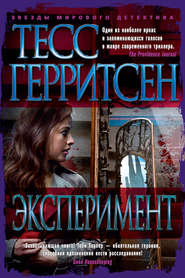По всем вопросам обращайтесь на: info@litportal.ru
(©) 2003-2024.
✖
Keeper of the Bride / Whistleblower: Keeper of the Bride / Whistleblower
Автор
Год написания книги
2018
Настройки чтения
Размер шрифта
Высота строк
Поля
“Shut up, Gillis,” said Sam.
Gillis looked at his partner. “Sam, I’m only trying to defend our position.”
“Won’t do us a damn bit of good. Since we’re obviously the designated fall guys.” Sam leaned back in his chair and eyed Liddell across the conference table. “What do you want, Mr. D.A.? A public flogging? Our resignations?”
“No one’s asking for your resignations,” cut in Chief Abe Coopersmith. “And this discussion is getting us nowhere.”
“Some disciplinary action is called for,” said Liddell. “We have a dead police officer—”
“Don’t you think I know that?” snapped Coopersmith. “I’m the one who had to answer to the widow. Not to mention all those bloodsucking reporters. Don’t give me this us and we crap, Mr. D.A. It was one of ours who fell. A cop. Not a lawyer.”
Sam looked in surprise at his chief. This was a new experience, having Coopersmith on his side. The Abe Coopersmith he knew was a man of few words, few of them complimentary. It was because Liddell was rubbing them all the wrong way. When under fire, cops always stuck together.
“Let’s get back to the business at hand, okay?” said Coopersmith. “We have a bomber in town. And our first fatality. What do we know so far?” He looked at Sam, who was head of the newly re-formed Bomb Task Force. “Navarro?”
“Not a hell of a lot,” admitted Sam. He opened a file folder and took out a sheaf of papers. He distributed copies to the other four men around the table—Liddell, Chief Coopersmith, Gillis, and Ernie Takeda, the explosives expert from the Maine State Crime Lab. “The first blast occurred around 2:15 a.m. The second blast around 2:30 a.m. It was the second one that pretty much levelled the R. S. Hancock warehouse. It also caused minor damage to two adjoining buildings. The night watchman was the one who found the first device. He noticed signs of breaking and entering, so he searched the building. The bomb was left on a desk in one of the offices. He put in the call at 1:30 a.m. Gillis got there around 1:50, I was there at 2:00 a.m. We had the blast area cordoned off and the top-vent container truck had just arrived when the first one went off. Then, fifteen minutes later—before we could search the building—the second device exploded. Killing Officer Pickett.” Sam glanced at Liddell, but this time the D.A. chose to keep his mouth shut. “The dynamite was Dupont label.”
There was a brief silence in the room. Then Coo-persmith said, “Not the same Dupont lot number as those two bombs last year?”
“It’s very likely,” said Sam. “Since that missing lot number’s the only reported large dynamite theft we’ve had up here in years.”
“But the Spectre bombings were solved a year ago,” said Liddell. “And we know Vincent Spectre’s dead. So who’s making these bombs?”
“We may be dealing with a Spectre apprentice. Someone who not only picked up the master’s technique, but also has access to the master’s dynamite supply. Which, I point out, we never located.”
“You haven’t confirmed the dynamite’s from the same stolen lot number,” said Liddell. “Maybe this has no connection at all with the Spectre bombings.”
“I’m afraid we have other evidence,” said Sam. “And you’re not going to like it.” He glanced at Ernie Takeda. “Go ahead, Ernie.”
Takeda, never comfortable with public speaking, kept his gaze focused on the lab report in front of him. “Based on materials we gathered at the site,” he said, “we can make a preliminary guess as to the makeup of the device. We believe the electrical action fuse was set off by an electronic delay circuit. This in turn ignited the dynamite via Prima detonating cord. The sticks were bundled together with two-inch-wide green electrical tape.” Takeda cleared his throat and finally looked up. “It’s the identical delay circuit that the late Vincent Spectre used in his bombings last year.”
Liddell looked at Sam. “The same circuitry, the same dynamite lot? What the hell’s going on?”
“Obviously,” said Gillis, “Vincent Spectre passed on a few of his skills before he died. Now we’ve got a second generation bomber on our hands.”
“What we still have to piece together,” said Sam, “is the psychological profile of this newcomer. Spectre’s bombings were coldbloodedly financial. He was hired to do the jobs and he did them, bam, bam, bam. Efficient. Effective. This new bomber has to set a pattern.”
“What you’re saying,” said Liddell, “is that you expect him to hit again.”
Sam nodded wearily. “Unfortunately, that’s exactly what I’m saying.”
There was a knock on the door. A patrolwoman stuck her head into the conference room. “Excuse me, but there’s a call for Navarro and Gillis.”
“I’ll take it,” said Gillis. He rose heavily to his feet and went to the conference wall phone.
Liddell was still focused on Sam. “So this is all that Portland’s finest can come up with? We wait for another bombing so that we can establish a pattern? And then maybe, just maybe, we’ll have an idea of what the hell we’re doing?”
“A bombing, Mr. Liddell,” said Sam calmly, “is an act of cowardice. It’s violence in the absence of the perpetrator. I repeat the word—absence. We have no ID, no fingerprints, no witnesses to the planting, no—”
“Chief,” cut in Gillis. He hung up the phone. “They’ve just reported another one.”
“What?” said Coopersmith.
Sam had already shot to his feet and was moving for the door.
“What was it this time?” called Liddell. “Another warehouse?”
“No,” said Gillis. “A church.”
THE COPS ALREADY had the area cordoned off by the time Sam and Gillis arrived at the Good Shepherd Church. A crowd was gathered up and down the street. Three patrol cars, two fire trucks and an ambulance were parked haphazardly along Forest Avenue. The bomb disposal truck and its boiler-shaped carrier in the flatbed stood idly near the church’s front entrance—or what was left of the front entrance. The door had been blown clear off its hinges and had come to rest at the bottom of the front steps. Broken glass was everywhere. The wind scattered torn pages of hymn books like dead leaves along the sidewalk. Gillis swore. “This was a big one.”
As they approached the police line, the officer in charge turned to them with a look of relief. “Navarro! Glad you could make it to the party.”
“Any casualties?” asked Sam.
“None, as far as we know. The church was unoccupied at the time. Pure luck. There was a wedding scheduled for two, but it was cancelled at the last minute.”
“Whose wedding?”
“Some doctor’s. The bride’s sitting over there in the patrol car. She and the minister witnessed the blast from the parking lot.”
“I’ll talk to her later,” said Sam. “Don’t let her leave. Or the minister, either. I’m going to check the building for a second device.”
“Better you than me.”
Sam donned body armor, made of overlapping steel plates encased in nylon. He also carried a protective mask, to be worn in case a second bomb was identified. A bomb tech, similarly garbed, stood by the front door awaiting orders to enter the building. Gillis would wait outside near the truck; his role this time around was to fetch tools and get the bomb carrier ready.
“Okay,” Sam said to the technician. “Let’s go.”
They stepped through the gaping front entrance.
The first thing Sam noticed was the smell—strong and faintly sweet. Dynamite, he thought. He recognized the odor of its aftermath. The force of the blast had caused the pews at the rear to topple backward. At the front, near the altar, the pews had been reduced to splinters. All the stained glass panels were broken, and where the windows faced south, hazy sunlight shone in through the empty frames.
Without a word between them, Sam and the tech automatically split up and moved along opposite sides of the nave. The site would be more thoroughly searched later; this time around, their focus was only on locating any second bombs. The death of Marty Pickett still weighed heavily on Sam’s conscience, and he wasn’t about to let any other officers enter this building until he had cleared it.
Moving in parallel, the two men paced the nave, their eyes alert for anything resembling an explosive device. All the debris made it a slow search. As they moved forward, the damage visibly worsened, and the odor of exploded dynamite grew stronger. Getting closer, he thought. The bomb was planted somewhere around here…
In front of the altar, at a spot where the first row of pews would have stood, they found the crater. It was about three feet across and shallow; the blast had ripped through the carpet and pad, but had barely chipped the concrete slab below. A shallow crater was characteristic of a low-velocity blast—again, compatible with dynamite.
They would take a closer look at it later. They continued their search. They finished with the nave and progressed to the hallways, the dressing rooms, the restrooms. No bombs. They went into the annex and surveyed the church offices, the meeting rooms, the Sunday school classroom. No bombs. They exited through a rear door and searched the entire outside wall. No bombs.
Satisfied at last, Sam returned to the police line, where Gillis was waiting. There he took off the body armor. “Building’s clean,” Sam said. “We got the searchers assembled?”
Gillis gestured to the six men waiting near the bomb carrier truck. There were two patrolmen and four crime lab techs, each one clutching empty evidence bags. “They’re just waiting for the word.”
“Let’s get the photographer in there first, then send the team in. The crater’s up front, around the first row of pews on the right.”
“Dynamite?”

















